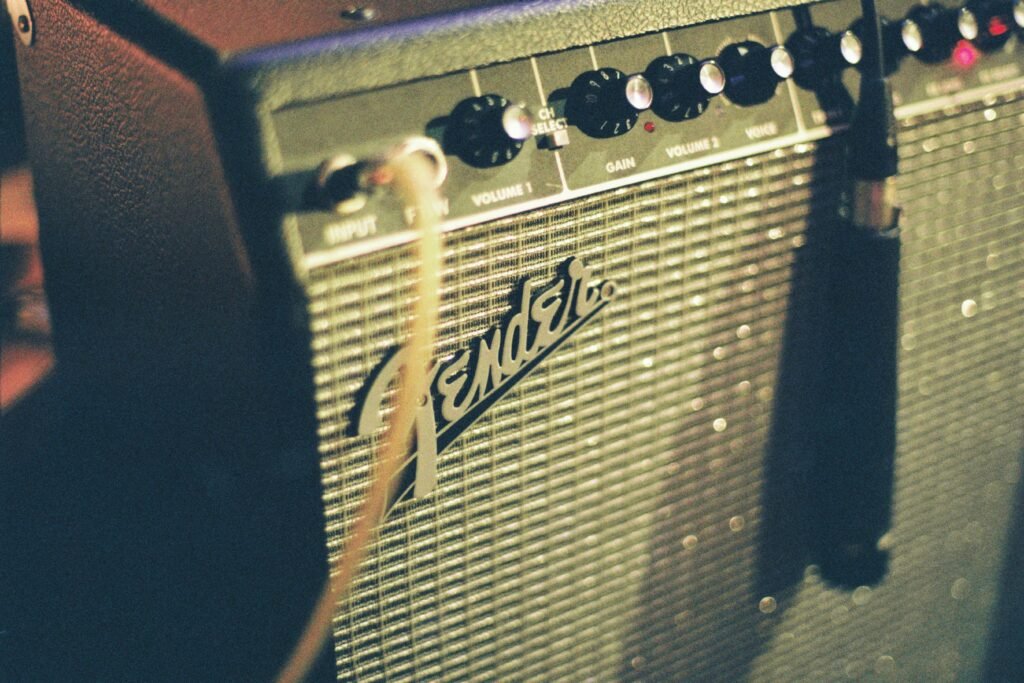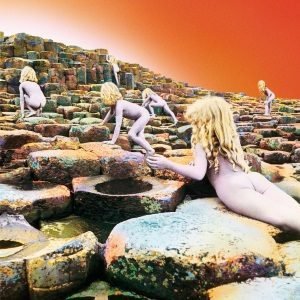By the time Led Zeppelin released Houses of the Holy in 1973, the band had already secured its place among rock’s elite. Their previous four albums charted a path from heavy blues to mythic hard rock, with Led Zeppelin IV standing as a cultural and commercial peak. So when Houses of the Holy arrived, expectations were sky high. Rather than replicate their past successes, the band took a more adventurous route. This album marked a notable shift in both tone and ambition.
While earlier records leaned heavily on blues traditions and raw energy, Houses of the Holy explores a broader palette. There are touches of funk, reggae, and even progressive rock woven into its fabric. Some fans were caught off guard by the change, but it’s clear the band aimed to stretch their creative boundaries.
Sonic Exploration

One of the most striking elements of Houses of the Holy is its polished and ambitious production. Recorded at several locations including the legendary Headley Grange and mixed at Olympic Studios in London, the album benefits from a cleaner, more spacious sound compared to the darker grit of Led Zeppelin IV. Jimmy Page, who also served as producer, seemed to lean into a more layered and deliberate approach this time. The result is a sound that often feels grand and theatrical, which suits the album’s more experimental leanings.
Musical Arrangements
The musical arrangements reflect this evolution. Tracks like “The Rain Song” and “No Quarter” showcase a new depth in dynamics and texture. The former wraps itself in soft orchestration and delicate guitar work, while the latter introduces moody keyboards from John Paul Jones, creating an eerie, dreamlike atmosphere. These are not just new sounds for Zeppelin, but signs of a band unafraid to let space and subtlety take the lead.
On the flip side, not every experiment lands cleanly. “D’yer Mak’er,” a reggae-inflected track, feels more like a playful detour than a fully formed idea. Its offbeat rhythm and doo-wop inspired vocals mark one of the album’s lighter moments, but it also divides listeners, some finding it charming and others dismissing it as a genre stretch too far.
Genre-wise, Houses of the Holy is a tour through a wide spectrum of styles. There’s funk-rock swagger in “The Crunge,” prog-rock melancholy in “No Quarter,” and straight-up rock majesty in “The Song Remains the Same.” While this genre-hopping adds excitement, it also gives the album a slightly uneven feel. At times, the transitions between styles can be jarring, making it harder to grasp a single cohesive mood. Still, the sheer range on display is a testament to the band’s restless creativity.
Lyrical Analysis

Lyrically, Houses of the Holy reflects a band in a period of exploration—not just musically, but thematically as well. Gone are the heavy doses of mysticism and Norse mythology that colored earlier albums. In their place is a looser, more eclectic range of subjects, spanning love, longing, satire, and introspection. If the album has a central theme, it might be the tension between earthly pleasures and ethereal escapes, though the band never spells it out too neatly.
Lyrical Depth
“The Rain Song” stands as one of the album’s most emotionally resonant pieces. Its lyrics read like a seasonal metaphor for romantic change, carried by Robert Plant’s tender vocal delivery. Lines such as “These are the seasons of emotion, and like the winds they rise and fall” show a more reflective side of the band’s lyricism. There’s a softness here, an emotional vulnerability that complements the song’s sweeping arrangement.
In contrast, “The Crunge” plays with parody and funk pastiche, its lyrics intentionally absurd and delivered with a knowing wink. It’s a clear James Brown send-up, but some listeners may find the joke runs a bit thin. Then there’s “No Quarter,” where cryptic lines evoke an icy, battle-worn landscape. The language is abstract and dreamlike, offering more mood than message, but it works in tandem with the music to create a sense of foreboding isolation.
One noticeable shift on this album is Plant’s increasing use of impressionistic lyrics. Rather than sticking to clear narratives, he leans into evocative phrases and emotional suggestion. This can be both a strength and a weakness. On songs like “The Ocean,” a tribute to the band’s fans, the lyrics feel grounded and joyful. But elsewhere, such as “Over the Hills and Far Away,” the shifts between introspection and bravado can feel disjointed.
Cohesion and Flow

One of the more debated aspects of Houses of the Holy is its cohesion—or at times, its lack thereof. Unlike Led Zeppelin IV, which feels like a carefully structured journey through various shades of rock mythology, this album plays more like a curated playlist of musical experiments. The track sequencing isn’t random, but it also doesn’t follow a clear emotional or narrative arc.
Track Progression
The album opens with “The Song Remains the Same,” a high-energy rush that sets an upbeat tone. It then drifts into the serene “The Rain Song,” which dramatically shifts the mood. This pairing is bold and shows the band’s range, but it also underscores how the album swings between extremes. From there, “Over the Hills and Far Away” brings a sense of balance, beginning with an acoustic introduction before transitioning into a more robust electric finish. It’s one of the smoother progressions on the record.
Yet the middle of the album feels more fragmented. “The Crunge” and “D’yer Mak’er,” placed back-to-back, venture into funk and reggae respectively, creating a sudden detour from the more introspective and progressive moments that come before and after. These genre shifts are not inherently problematic, but they do disrupt the flow, especially when considered within the album’s broader tone.
“No Quarter” and “The Ocean” help to re-establish a sense of cohesion toward the end. “No Quarter” is brooding and atmospheric, offering a stark contrast to the playful groove of “The Ocean,” which closes the album with a celebratory flair. It’s an ending that feels triumphant, even if the route to get there wasn’t entirely smooth.
Thematic Consistency
Thematically, the album’s wide range of moods and styles is both its strength and its stumbling block. While it reflects the band’s refusal to be boxed into a single genre or formula, it also means the album doesn’t always feel like a unified statement. Rather, it plays as a series of musical snapshots—some more successful than others—held together by the band’s undeniable chemistry and adventurous spirit.
Standout Tracks and Moments
Several tracks on Houses of the Holy rise above the album’s stylistic sprawl to leave a lasting impression.
The Rain Song
Chief among them is “The Rain Song,” a slow-burning ballad that reveals Led Zeppelin’s softer, more orchestral side. Its layered textures and restrained pacing mark a departure from their heavier roots. The song’s emotional core rests in both the arrangement and Plant’s reflective lyrics, making it one of the most mature and affecting pieces in their catalog.
No Quarter
Another standout is “No Quarter,” a moody, keyboard-driven journey that showcases the band’s ability to build atmosphere. John Paul Jones’s use of electric piano and synthesizers creates a thick, immersive soundscape, while Jimmy Page’s guitar work is subtle yet haunting. The track moves at a glacial pace, drawing the listener into a dreamlike state. It’s a moment where Zeppelin sounds entirely unbound by genre, trading bombast for depth.
Over the Hills and Far Away
“Over the Hills and Far Away” also deserves praise for its dynamic structure. Beginning with gentle acoustic fingerpicking before shifting into an electric groove, it encapsulates the band’s duality—pastoral and powerful in one breath. It’s also one of the few tracks on the album where the lyrical content and musical arc feel tightly integrated.
Memorable Moments
While “D’yer Mak’er” and “The Crunge” are more polarizing, they still offer moments of intrigue. “D’yer Mak’er” flirts with reggae in a way that’s more tongue-in-cheek than authentic, but its simplicity and playful vocal line have given it lasting appeal. “The Crunge,” while arguably the album’s most divisive track, demonstrates the band’s willingness to push boundaries, even at the risk of falling flat.
A particularly memorable moment arrives at the end of “The Ocean,” where Plant’s off-mic shout—“Alright, let’s go!”—feels spontaneous and celebratory. It breaks the fourth wall just enough to remind the listener of the human energy behind all the technical skill. It’s small, but it captures the joy and looseness that defines much of the album.
Artistic Contribution and Innovation

When Houses of the Holy landed in 1973, Led Zeppelin was already a dominant force in rock music. But rather than coasting on the bluesy bombast that had defined their earlier work, the band used this album as a pivot point. It didn’t just reinforce their status—it complicated it. In terms of its place within rock’s broader evolution, Houses of the Holy occupies an important space. It doesn’t align neatly with the heavy blues-rock of Zeppelin’s roots, nor does it fully commit to the emerging prog or glam scenes of the time. Instead, it carves out its own identity by embracing genre fluidity and sonic experimentation.
One of the album’s most notable contributions is its expansion of what a hard rock band could be. The inclusion of funk elements in “The Crunge,” reggae-inspired rhythms in “D’yer Mak’er,” and the orchestral sweep of “The Rain Song” were bold moves for a band so closely tied to the raw power of earlier records. These stylistic detours signaled to both fans and fellow musicians that boundaries were meant to be tested, even by the most successful acts.
Innovation
In terms of innovation, Houses of the Holy is perhaps most impressive for its textural and structural shifts. The production is cleaner and more nuanced than on previous albums, with Jimmy Page layering guitar parts and experimenting with new effects, while John Paul Jones steps further into the spotlight as a multi-instrumentalist and arranger. Tracks like “No Quarter” push the band into cinematic territory, suggesting new possibilities for mood and narrative in rock songwriting.
Thematically, the album also takes a more fragmented and playful approach than its predecessors. Rather than presenting a unified concept or message, it thrives on contrast—switching between introspection and irony, grandeur and groove. While this lack of cohesion may keep it from being considered a masterpiece in the traditional sense, it also reflects a willingness to break free from expectations.
Closing Thoughts

Houses of the Holy stands as a bold and often brilliant chapter in Led Zeppelin’s storied career. Its strengths lie in its fearless experimentation, refined production, and moments of genuine musical innovation. The band’s willingness to stretch beyond their blues-rock origins gave the album a distinct identity, one that embraces a broad emotional and stylistic range. Tracks like “The Rain Song,” “No Quarter,” and “Over the Hills and Far Away” reveal a band expanding its vocabulary without losing its core energy.
At the same time, the album isn’t without its flaws. Its eclectic nature, while exciting, can sometimes work against its cohesion. Not every genre detour feels fully realized, and a couple of tracks—namely “The Crunge” and “D’yer Mak’er”—divide opinion more than they unify listeners. These missteps don’t derail the record, but they do contribute to its uneven pacing.
Still, the album’s ambition and execution outweigh its inconsistencies. Houses of the Holy may not be the most iconic or cohesive entry in the Led Zeppelin catalog, but it’s arguably one of the most revealing. It captures a band at a creative crossroads, willing to take risks and redefine its sound. For listeners, it offers both immediate pleasures and deeper rewards with repeated listens.
Official Rating: 8/10
This score reflects the album’s undeniable strengths in artistry, innovation, and emotional reach, while acknowledging the occasional lack of thematic focus. It’s a transitional work, but a vital one—bold, flawed, and fascinating.
